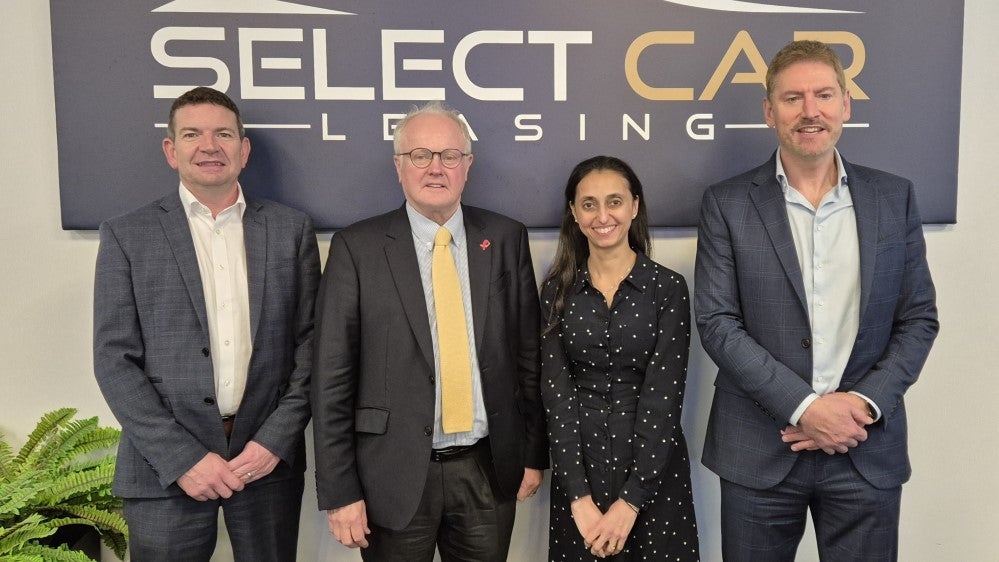Richard Brown and Georgina Lavers ask senior figures in the car finance industry for their hopes and expectations for the next 12 months in point of sale finance.

![]() What shape is the motor finance industry in for the year ahead?
What shape is the motor finance industry in for the year ahead?
Kurt Bradbury: Tough conditions will persist in the motor finance market in 2012. In a cost- and price-conscious environment it is essential that companies focus on customer service. Great service costs nothing.
The advice of an old boss of mine from nearly 20 years ago still resonates and is highly applicable in the current climate: "The three keys to success are attitude, attitude and attitude."
Jason Wakelam: If we have a couple of quarters of contraction and real uncertainty around where the economy is going, you could see quite a significant step-change within vehicle sales. Thats not 1% or 2%, thats 5% or 10% quite feasibly.
How well do you really know your competitors?
Access the most comprehensive Company Profiles on the market, powered by GlobalData. Save hours of research. Gain competitive edge.

Thank you!
Your download email will arrive shortly
Not ready to buy yet? Download a free sample
We are confident about the unique quality of our Company Profiles. However, we want you to make the most beneficial decision for your business, so we offer a free sample that you can download by submitting the below form
By GlobalDataPeter Stewart: We know the UK market is worth 2.4m cars. The outlook is reasonably good but short-term is reasonably painful. You dont have to have four dealerships selling the same brand in the same town.
Kirk Franks: Price is always going to be an important consideration for people when looking to buy a car, so dealers must ensure that the face value isnt the only figure they see and look at the whole package.
![]() Are captive finance incentives sustainable?
Are captive finance incentives sustainable?
Chris Sutton: We shouldnt delude ourselves into thinking that POS would be at an all-time high without manufacturer subsidies. That has made up a large part of the difference.
Theres pressure on manufacturers to move metal and interest rates are still low but, when they move up, 0% rates will become more costly to offer.
Where does it all leave independents? A minority of our business is new outside our joint ventures so there isnt too much of an impact at the moment.
But as interest rates rise and subsidised offers become less extensive, there may be room for a subtle shift of independent finance into the new market.

Joe Pattinson: Customers in the market for new cars will continue to want to feel that they are getting a good deal and are being able to buy a new car with an attractive finance offer.
Manufacturers will continue to support these offers to drive retail customers into showrooms.
Peter Stewart:Captive incentives will be a mainstay of most of our business this year. Manufacturer-linked dealers are looking at 0% schemes. I can see supported finance packages being a really strong driver throughout the year.
Jason Wakelam:Youll see a lot more focus on incentivising people to buy cars with regards to 0% finance, VAT, cashback and everything else. Theyll be looking at what they can realistically do to get vehicles out.
Graham Prestedge:The bottom line is that manufacturers have got an element of variable marketing spend and they will spend it where they think they get their biggest opportunities to sell the car. And a large part of that is in the arena that supports finance.
Do manufactures need finance incentives to sell cars? If they do, itll be sustainable. What is the access to liquidity like for captive finance houses? We are in not-that-bad a place, but if eurozone banks stop lending to each other that gives all sorts of challenges.
![]() What effect will the downsizing of some manufacturers have?
What effect will the downsizing of some manufacturers have?
Mark Smith: The average loan size will decrease. When manufacturers downsize, consumers downsize. Theyre looking for better value. If the supply of cars is less, it increases the price dealers have to pay.
Jason Wakelam:Manufacturers will be increasingly prepared to lend money to support sales and, as they face greater risk around default, lowering their rates, particularly on used car sales.
There are still a lot of vehicle manufacturer finance companies supporting the dealerships, but having to cut rates just to keep tempting purchases.
Peter Stewart: Demand doesnt go away, it just gets pent up. I think well see a rationalisation of the number of dealerships.
A lot depends on manufacturers aggression on pre-registration policies. Well probably lose about 10% of the dealer network through lack of funding. Those that remain will have a brighter future and a bigger slice of the pie.
![]() What does the year hold for the subprime market?
What does the year hold for the subprime market?
Andrew Marsh: The volume of subprime lending in 2012 will be determined by the strengths of the banks and financial institutions that provide funding to the remaining subprime lenders in the UK.
Our facilities management division has attracted a number of enquiries from potential new entrants to the market, both prime and subprime, attracted by the lack of competition and excellent returns. The only certainty for 2012 is that subprime lending, as always, will be challenging. There will be good business to write and good profits to be made for those who can adapt.
Steve Reynolds: Subprime is back in a big way. Specialist subprime finance houses have money to lend, new technology that helps customers keep up with payments is coming to the fore, and dealers need to realise the subprime market is growing, not decreasing.
David Challinor: It shouldnt be imagined that every finance application taken by The Funding Corporation is simply a rebound following a decline received elsewhere. Widespread publicity given to the tightening of most lenders application criteria has heightened realism among consumers about how their credit history is likely to influence a lending decision. In many cases, we believe, customers are second-guessing underwriting decisions and self-selecting what they regard as more appropriate lending options.
Peter Stewart: The idea of the subprime market has disappeared. People that get funds promise to pay and arent charged extortionate fees. Its not the way it was with 20% flat rates. Today were seeing 8%, 10%, 12% available. We saw 30% growth in the market from 2010 to 2011, and I see that continuing.
![]() Will PCP continue to gain prominence? Even in the used market?
Will PCP continue to gain prominence? Even in the used market?
Mark Smith: Its an affordable way to buy cars. The residual value, the depreciation of the car, is less of a concern. Its a safer lend.
Graham Prestedge: That depends on what happens with future residual values. PCP will be a great product all the time that companies are comfortable that the future values are OK.
Joe Pattinson: Car finance, and PCP in particular, will become the norm in the not-too-distant future, as attitudes to the concept of car ownership continue to evolve and manufacturers continue to support PCP and use it as a customer retention tool.
Consumers have realised finance now carries a number of advantages; in fact four-in-ten drivers now see finance as a perfectly acceptable way to own the car of their dreams.
Kirk Franks: Consumers attitudes to buying cars have changed. In 2012, seasonal and regional offers, clearly displayed in dealerships, will be vital to attract the money-saving customer. Customers dont necessarily understand all of the options available to them, and, as such, education is key. PCP offers tailored financial packages to meet their individual needs.
Steve Reynolds: The used car market will be the main area of growth for PCP. Finance houses are providing more flexible parameters with regard to age and mileage of a vehicle at the end of the term.
Dealers see the importance of used car customer retention and PCP reduces the likelihood of customers exercising the 14-day right of withdrawal and helps safeguard the dealers profit against competition from direct lenders.
PCP is now accepted and trusted as a product by the public.
 What about other problems in used cars? Can supply problems be overcome?
What about other problems in used cars? Can supply problems be overcome?
Steve Reynolds: Franchised dealers who have been up to the mark will benefit from part exchange returns. However, independents who have not worked hard on nurturing a regular supply chain may suffer.
Mark Smith: Itll take some time. Were probably four years away from the buoyancy of four or five years ago. We need time to let fleet cars trickle down to the used car market.
Chris Sutton: The market is smaller than we expected. To do a certain amount of new business, there are certain levers you can pull. Price is one. Whats happening out there in pricing terms is not silly. Eyebrow-raising deals tend to be tactical rather than endemic. Its a much more sensible market than it was three or four years ago.
![]() Where is wholesale pricing heading?
Where is wholesale pricing heading?
Graham Prestedge: Cost of liquidity or funds is going to creep up over the course of the next year. Everybody has got to be conscious of what their capital costs and what new banking legislation means: The amount of capital you have got to hold and what liquidity costs, relative to where we get our money from.

Mark Smith: Wholesale cash is expensive. I only see that going up as market appetite is restricted.
Andrew Marsh: If the global economy struggles and, in particular, the eurozone, we may see wholesale funding reducing. In that scenario, we are back to 2008/2009 and survival of the fittest.
Chris Sutton: We have seen increased signs of pressure on dealers. Several are going into administration or doing tactical sales, and theres nothing in the economy that gives us confidence this will change in the next few months.
It will shake out the less efficient dealers and there will be a greater risk attached when we write wholesale business. Weve been much more careful, not in terms of credit but in terms of monitoring wholesale facilities. You have to be more risk-aware in a difficult period like this.
We and many other independents raised prices around the middle of the year. Since then weve seen consistent stability in the cost of money and not increased prices further. Interest rates have softened slightly, and the general opinion is that, far into 2012, the position will continue to be as stable. But we dont expect that underlying interest rates will shift for several months.
 Whats the future for brokers in car finance?
Whats the future for brokers in car finance?
Kirk Franks: 2011 was tough but we did see some great successes among our dealer and broker partners, which we foresee to continue.

Graham Prestedge: There is a part for brokers to play. How that will change over the course of the next few years will depend upon legislation. There will always be a part for people in this industry that give a far-closer touch to the dealer and the consumer than most of the big-end, independent and manufacturer finance companies can do.
Peter Stewart: I dont think theres a good future for them, depending on the OFTs guidance notice on commissions disclosure. Dealers will pull away from brokers as they wont want to disclose their commission.
Mark Smith: Therell always be a market for brokers, subject to financial consumers accepting their business.
 How much competition do you expect from direct lenders?
How much competition do you expect from direct lenders?
Chris Sutton: Access to other lenders is getting easier advertised rates of 6.2% and 6.4% but not many people will qualify for them. Customers arent blind to the price war, however. Demand for personal loans from direct lenders in general is clearly lower than expected. Providers are resorting to pricing to attract more custom.

Graham Prestedge: I expect as much competition as the liquidity in the market will allow. Were seeing a headwind of low rates being advertised. The reliance on, and the stagnation of, the mortgage market has meant that banks have got to do something.
Joe Pattinson: With banks reluctant to lend, and interest rates for personal loans remaining high for all but the best customers, its more than likely that customers will get a better deal, at a lower rate, from a manufacturer or dealer. Manufacturer-backed campaigns often offer lower APRs than can be found on the high street or internet. Customers may also be looking for a lower monthly payment, or shorter repayment period, which makes PCP-style products more attractive.
Kirk Franks: Competition is good for the market, but choice is the way to answer the customers needs and requirements.
 Could there yet be a market for personal leasing?
Could there yet be a market for personal leasing?
Joe Pattinson: Personal leasing products will grow as customers demand to pay for usage and hand the car back at the end of their agreement. Schemes will grow as manufacturers start to bolt services onto agreements to make the product a convenient one-stop shop where insurance and other services are included in the monthly payments.
Graham Prestedge: It is, and will remain, a relatively small part of the market for possibly two-to-three years. I dont think the consumer appetite is to move toward personal leasing for all sorts of reasons. Great marketing tool, but how many turn into sales?
Kirk Franks: Certain manufactures have offered PCH in 2011 and this may come to the forefront in 2012. Even though it has a place in the market, the product can be prohibitive when customers wish to change. With Treating Customers Fairly it is of upmost importance that the customer receives a full explanation of the product before using this as a funding method.








